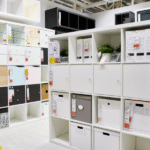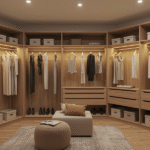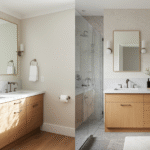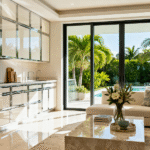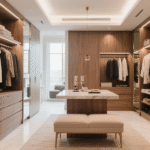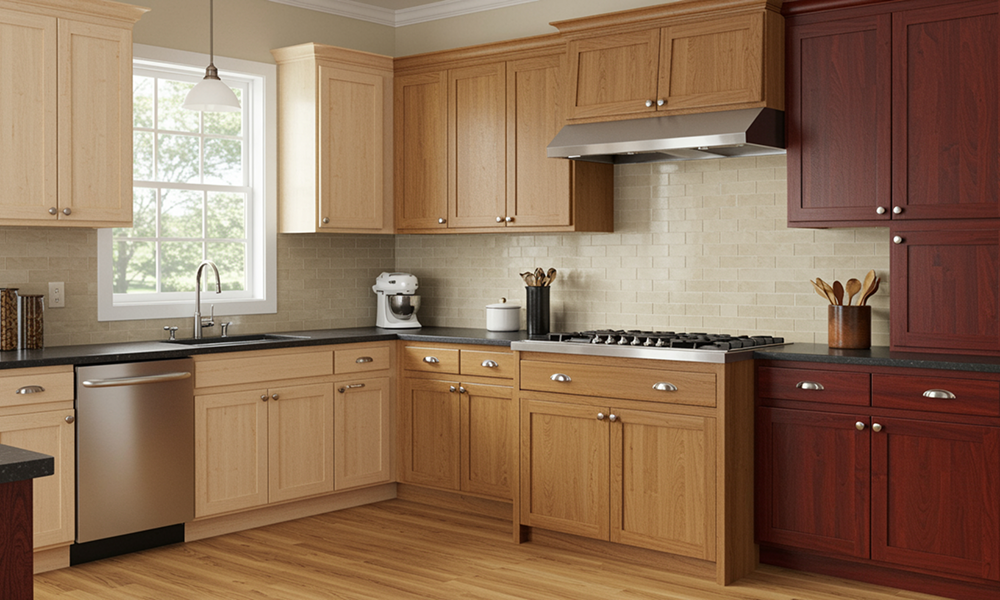
The Ultimate Guide to Cabinet Materials: Wood Types Explained
Oct 16, 2025
There is no doubt that your kitchen is arguably the hardest working room in your home. From slow mornings to late-night parties, they all eventually end up in the kitchen. Considering all this action, it is no surprise that when choosing new kitchen cabinets, the material one opts for is such a debated topic.
The color you paint them can change, but the lifespan, look, and overall value they provide is determined largely by the material you pick. So, choosing the right material is an extremely important decision. Let’s dive into the fascinating world of cabinet materials to uncover the pros and cons of the most popular wood and wood-composite options available today.
Before we dive too deep into the wood types, remember that knowing your materials is only half the battle. Once you know what you want, you need the right professional to build it. Make sure you know the questions to ask before hiring a cabinet maker to ensure your project goes smoothly!
The Timeless Appeal of Natural Hardwoods
There simply is no denying the fact that there is nothing quite like the warmth, depth, and sheer durability offered by solid hardwood. When people think about “wood cabinets,” they’re usually referring to one of these classic choices.
They are on the pricier side, but the return on investment in terms of their longevity and aesthetic appeal makes them absolutely worth considering.
So, let’s take a look at different types of woods and break down their pros and cons.
Maple: The Smooth Operator
Maple is a super popular choice for modern cabinets because of its fine and even grain. It is dense, which adds durability, an obvious advantage for busy kitchens.
Maple is one of the most popular choices for modern and transitional cabinets because of its fine, even grain. It’s a dense wood, which means it resists denting and is incredibly durable, making it a superstar in busy kitchens.
Pros: It’s super durable, takes paint beautifully due to its smooth surface, and holds up well to daily wear and tear.
Cons: It can sometimes absorb stain unevenly, which is why it’s often chosen for painted finishes. It’s also pricier than oak or birch.
Oak: The Classic Workhorse
Oak wood, especially the red oak variety, is lauded for its open grain patterns with distinctive texture and traditional feel. Also, they’re incredibly strong.
Pros: It is highly durable and widely available, which helps keep costs down considerably. Its strong grain hides minor dings or imperfections that might appear on smoother woods.
Cons: The bold grain might look too busy for sleek, minimalist kitchen designs; it is a commitment to the style. It can also be tricky to get a perfectly smooth painted finish because the grain texture can show through.
Cherry: The Luxury Option
Let’s bring some extravagance to the table. Cherry wood is prized for its rich and warm tones that only get deeper and darker, in the most beautiful of ways, over time. Often, cabinet makers are asked to use wood that has “character,” and cherry wood is often their choice.
Pros: Cherry wood offers a luxurious look and is also easier for cabinet makers to work with on custom designs. It ages in unique ways, which adds a whole new level to custom cabinet aesthetics.
Cons: It is one of the more expensive hardwood options, and its color can darken unevenly if portions are exposed to more sunlight than others. While the latter isn’t always a bad thing, the former can be an issue for anyone on a tighter budget.
The World of Engineered Wood Materials
For most modern kitchen cabinets, the structure, the box that holds the drawers and shelves, is made from what is called engineered wood.
This wood is basically made by manufacturers mixing real wood scraps and strong glue. It’s durable, stable, and much more affordable.
Often, the doors are where you’ll see the expensive solid wood or a matching veneer, while the box is made from one of these:
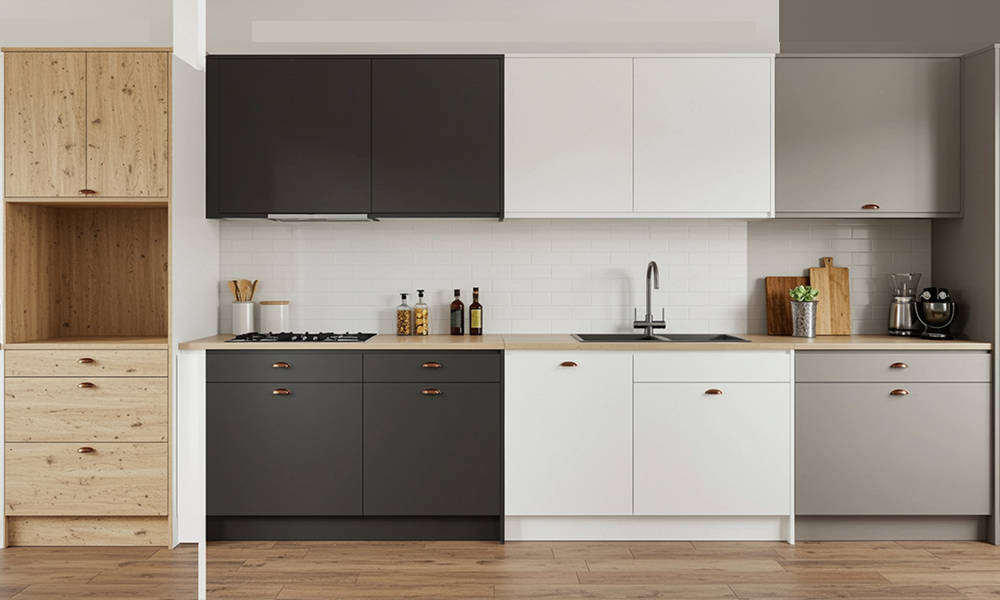
Plywood: The Structural Champion
Most of us have heard about plywood. Let’s understand how it’s made. Manufacturers procure layers of thin wood called plies and glue them together with each layer facing a different direction, kind of like layering a cake in a crosswise pattern to make it stronger.
Naturally, the same strength translates to plywood, making it incredibly tough, capable of holding screws and hinges really well, all the while being lightweight. That is a major plus when the cabinets will be hanging on the wall.
Best of all, it resists moisture and warping better than the other engineered options, though it is usually the most expensive among them. Just remember, the edges will need a special finishing strip to look clean.
MDF (Medium-Density Fiberboard): Best for Painting
MDF is made using tiny, fine wood fibers that have been pressed together with strong resin, giving it a perfectly smooth surface, which makes it ideal for painted cabinets as no wood grain shows through. It is a clear canvas, so to speak.
Furthermore, it is super affordable and resistant to swelling or shrinking due to moisture or humidity far better than actual wood. With that said, it isn’t as strong as plywood but weighs more.
The biggest caution is that it’s terrible with water. If the finish cracks and water gets in, the material swells quickly, and that damage is very hard to fix.
Particleboard: The Budget Option
The least expensive option on the market is particleboard, wherein wood chips and sawdust are glued together and almost always covered with a laminate or a veneer to give it a smooth, finished look.
Its affordability comes at the cost of its low durability, especially against water and moisture. It swells easily, and it doesn’t hold screws well over time, which can lead to doors and hinges starting to sag.
The Art of Veneer
Veneer is an art form in itself. It isn’t cheap paper or plastic as often assumed but instead a very thin slice of real, high-quality hardwood like cherry or walnut that is glued onto a core board, usually the more budget-friendly variety (like plywood or MDF). By applying it on top, this process allows the more affordable options to also have the consistently beautiful wood grain without actually paying for solid lumber.
Since it’s bonded to a stable core, the veneer is less likely to warp or crack from kitchen heat and humidity than a big piece of solid wood would be. It’s a great way to save money and get a high-quality finish.
Conclusion
Choosing the ideal material for your kitchen cabinets requires balancing your budget, the desired aesthetic, and the amount of traffic your kitchen sees. Solid hardwoods offer unmatched natural beauty and a lifetime of durability, while engineered materials like plywood provide superior stability and are often a practical choice for cabinet boxes. Whether you prioritize the deep tones of cherry or the clean lines achieved with painted MDF, consulting experienced cabinet makers is the first step to ensuring your investment results in a beautiful, long-lasting kitchen.
Frequently Asked Questions
Can I mix materials in the same kitchen?
Absolutely, and it’s a very common practice. Many cabinet makers suggest using plywood for the cabinet boxes because of its moisture resistance and strength, and then using solid hardwood or MDF for the doors and drawer fronts to achieve the desired look and finish (like a smooth painted door). This strategy maximizes durability where it counts and optimizes cost.
What is the difference between a veneer and a laminate?
A veneer is a thin layer of real wood that is sliced from a log, meaning it has the natural grain and texture of that specific tree species. A laminate is a synthetic product (often paper or plastic) that is printed with a wood-look pattern or a solid color. Veneers offer an authentic, high-end look, while laminates are typically more affordable and durable against surface scratches.
Is it safe to use particleboard for cabinets near the sink or dishwasher?
It is generally not recommended unless it is a high-grade, moisture-resistant particleboard that has been impeccably sealed and covered with a waterproof laminate or veneer. Particleboard is highly susceptible to moisture, and a simple water leak or regular condensation can cause it to swell and fail very quickly, which is a major concern in high-humidity areas like near appliances or the sink.
